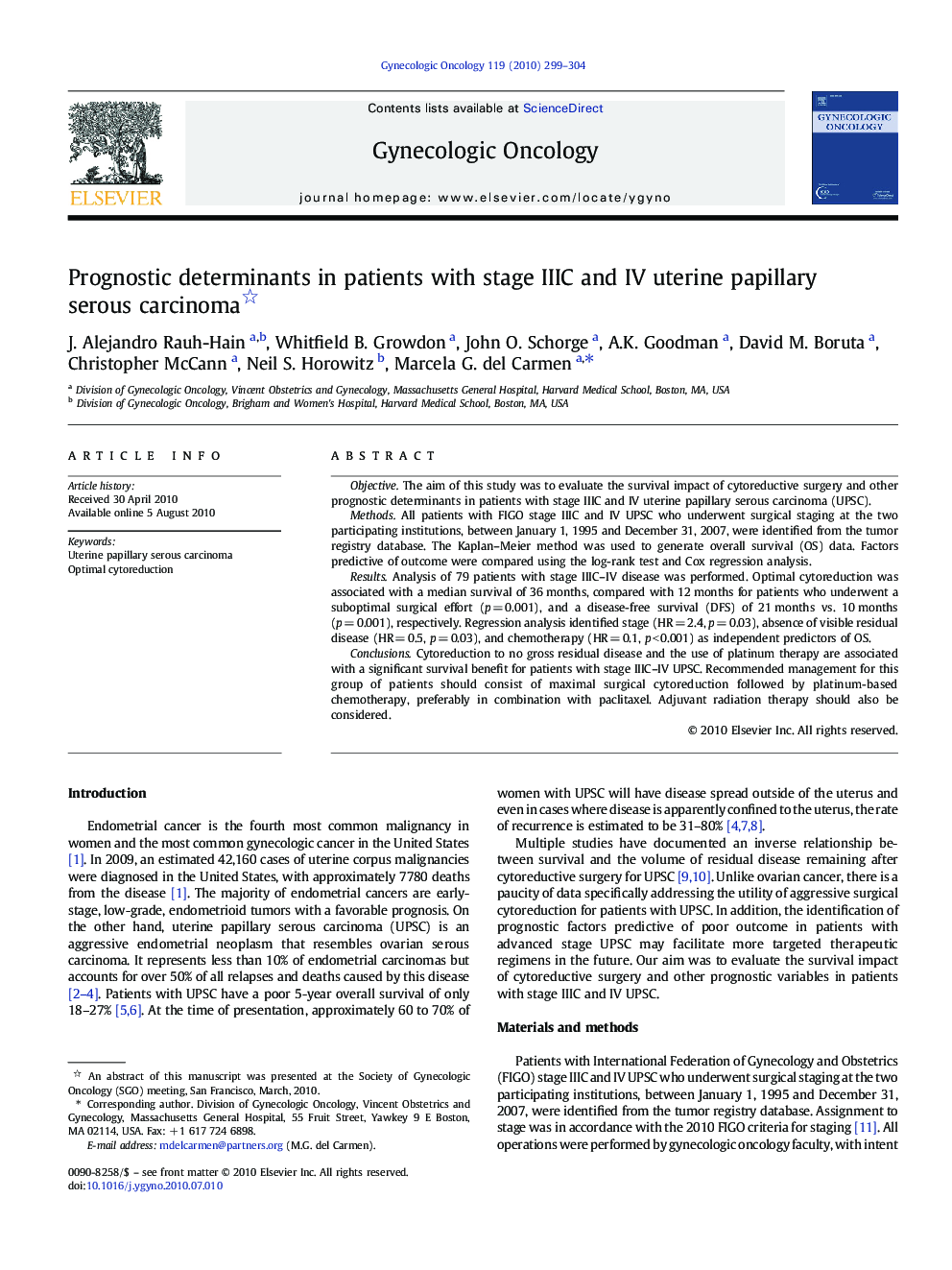| Article ID | Journal | Published Year | Pages | File Type |
|---|---|---|---|---|
| 3947334 | Gynecologic Oncology | 2010 | 6 Pages |
ObjectiveThe aim of this study was to evaluate the survival impact of cytoreductive surgery and other prognostic determinants in patients with stage IIIC and IV uterine papillary serous carcinoma (UPSC).MethodsAll patients with FIGO stage IIIC and IV UPSC who underwent surgical staging at the two participating institutions, between January 1, 1995 and December 31, 2007, were identified from the tumor registry database. The Kaplan–Meier method was used to generate overall survival (OS) data. Factors predictive of outcome were compared using the log-rank test and Cox regression analysis.ResultsAnalysis of 79 patients with stage IIIC–IV disease was performed. Optimal cytoreduction was associated with a median survival of 36 months, compared with 12 months for patients who underwent a suboptimal surgical effort (p = 0.001), and a disease-free survival (DFS) of 21 months vs. 10 months (p = 0.001), respectively. Regression analysis identified stage (HR = 2.4, p = 0.03), absence of visible residual disease (HR = 0.5, p = 0.03), and chemotherapy (HR = 0.1, p < 0.001) as independent predictors of OS.ConclusionsCytoreduction to no gross residual disease and the use of platinum therapy are associated with a significant survival benefit for patients with stage IIIC–IV UPSC. Recommended management for this group of patients should consist of maximal surgical cytoreduction followed by platinum-based chemotherapy, preferably in combination with paclitaxel. Adjuvant radiation therapy should also be considered.
